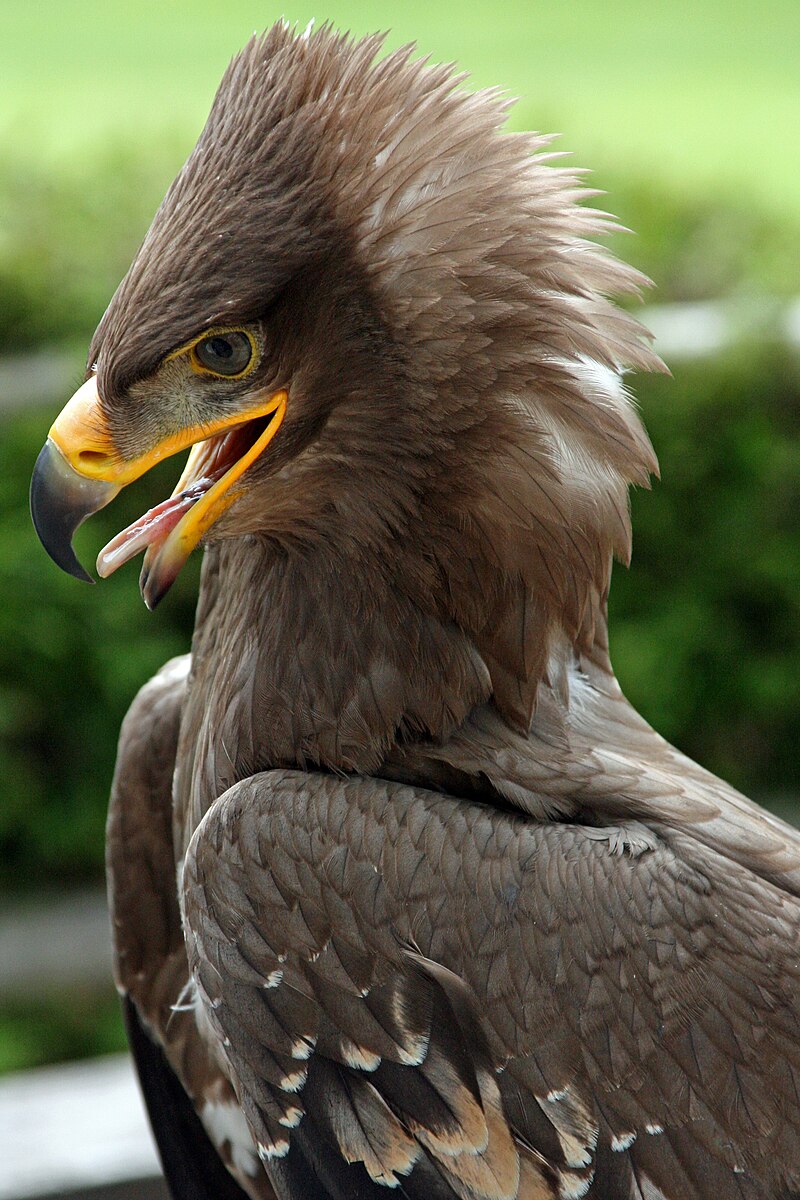Steppe eagles (Aquila nipalensis) are diurnal birds of prey, meaning they are primarily active during the day and not at night. Their vision is adapted for hunting during daylight hours, and they do not have the necessary adaptations to see clearly in low light conditions like cats and other nocturnal animals do. Therefore, steppe eagles cannot see well at night and are unlikely to be active in hunting or other behaviors during this time.
Steppe Eagles’ Vision and Adaptations
Steppe eagles have excellent eyesight during the day, with binocular vision and the ability to spot prey from great distances. Their eyes are large and positioned on the front of their head, giving them a wide field of view and depth perception. This helps them locate and track their prey effectively while hunting.
However, steppe eagles lack the specialized adaptations that allow some other birds and animals to see well in low light conditions. For example, they do not have the large pupils, reflective tapetum lucidum layer, or rod-dominated retinas that enable nocturnal vision in species like owls and cats.
Hunting and Behavior of Steppe Eagles
 Image source: Steppe Eagle by Fimb
Image source: Steppe Eagle by Fimb
Steppe eagles are primarily diurnal, meaning they are active and hunt during the day. They use their keen eyesight to scan the ground from a high vantage point, such as a tree or cliff, and swoop down to capture small mammals, birds, and reptiles as their prey.
At night, steppe eagles typically roost in trees or on cliffs, resting and conserving energy for the next day’s hunting activities. They may engage in some limited movement or vocalization at night, but they are not actively hunting or pursuing prey during this time.
Adaptations for Daytime Vision
Steppe eagles have several adaptations that enhance their vision and hunting abilities during the day:
-
Binocular Vision: Steppe eagles have their eyes positioned on the front of their head, giving them a wide field of view and the ability to perceive depth and distance. This helps them accurately track and capture their prey.
-
Keen Eyesight: Steppe eagles have excellent visual acuity, allowing them to spot small prey from great distances. Their eyes are large in proportion to their body size, and they have a high concentration of photoreceptors in their retinas.
-
UV Vision: Steppe eagles, like many other birds of prey, can see ultraviolet light, which helps them detect the urine trails and scent markings of their prey.
-
Rapid Eye Movement: Steppe eagles can move their eyes rapidly, allowing them to scan the landscape efficiently and track moving prey.
Comparison to Nocturnal Birds of Prey
While steppe eagles are not adapted for nighttime vision, some other birds of prey, such as owls, have specialized adaptations that allow them to hunt effectively in low light conditions. These adaptations include:
- Large Pupils: Owls have very large pupils that can open wide to let in more light, enabling them to see better in the dark.
- Reflective Tapetum Lucidum: Owls have a reflective layer behind their retinas, called the tapetum lucidum, which reflects light back through the retina, enhancing their low-light vision.
- Rod-Dominated Retinas: Owls have a higher proportion of rod photoreceptors in their retinas, which are more sensitive to low light levels than the cone photoreceptors that dominate the retinas of diurnal birds like steppe eagles.
These adaptations allow owls and other nocturnal birds of prey to hunt successfully at night, while steppe eagles are limited to daytime activities due to their lack of specialized low-light vision.
Conclusion
In summary, steppe eagles (Aquila nipalensis) are diurnal birds of prey that cannot see well at night. Their vision is adapted for hunting during the day, with features like binocular vision, keen eyesight, and the ability to see ultraviolet light. However, they lack the specialized adaptations, such as large pupils, reflective tapetum lucidum, and rod-dominated retinas, that allow some other birds of prey to hunt effectively in low light conditions. As a result, steppe eagles are primarily active and hunt during the daylight hours, while they typically roost and rest at night.
References:
– Wikipedia – Steppe Eagle
– European Raptors – Steppe Eagle
– Russian Raptor Research and Conservation Network – About Steppe Eagle
– Animalia – Steppe Eagle

